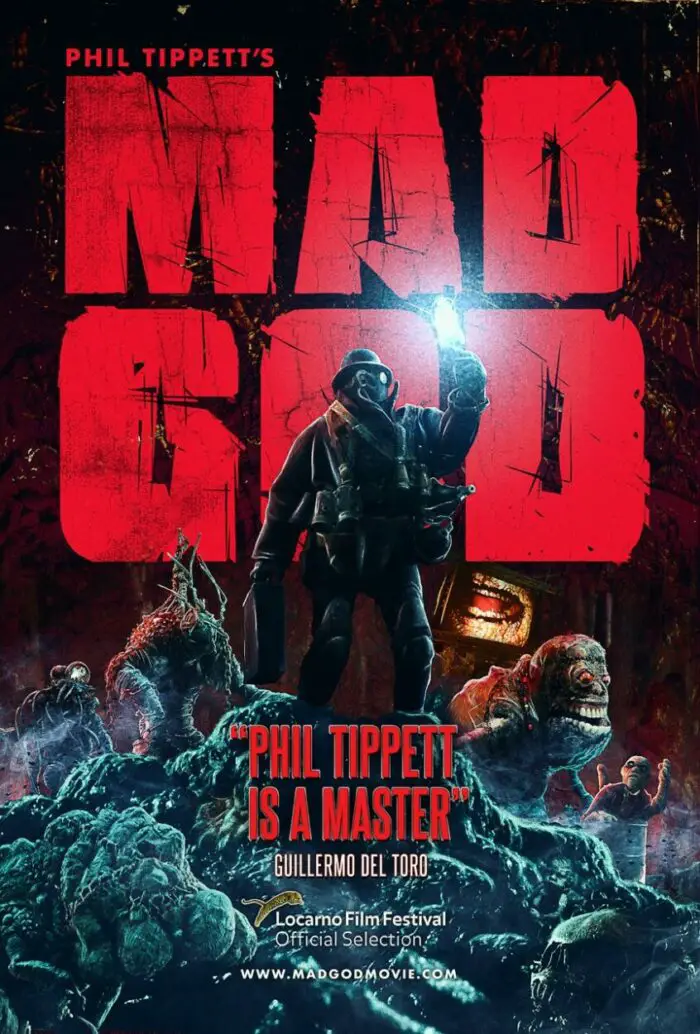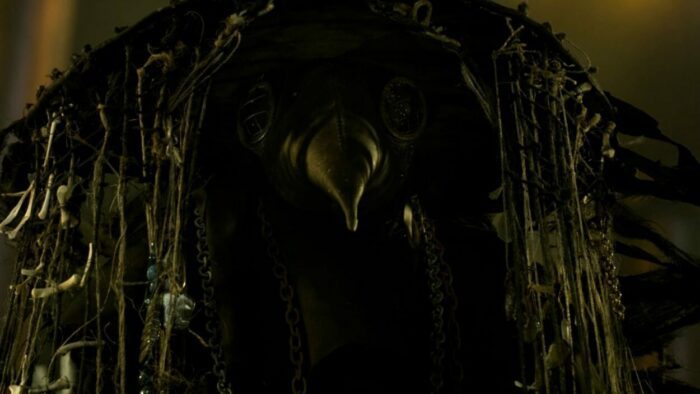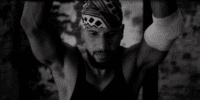Welcome to this column dedicated to my appreciation of physical media supplements called: Feature Presentations. The goal of this column is not to say whether a film is good or bad and worth picking up or not—I would like to highlight the discs that go the extra mile and provide film fans with enough tasty tidbits to satisfy even the hungriest of cinephiles. With all that out of the way, today’s article will focus on Mad God from RLJE Films.

I don’t think I have to talk about who Phil Tippett is and what he means to the world of filmmaking. He’s an Academy Award winner who has helped pioneer visual effects from Star Wars to Jurassic Park. While it may seem that he would be one of the go-to’s for effects work, his true artistry lies within stop-motion animation. In the days when computer-generated imagery is the norm, Tippett has gone against the grain. He has worked to carve his own path and forge ahead with what seemed to be a dying art form. His persistence and dedication to the craft have culminated in his 30-year magnum opus: Mad God.
There have been writings about the meaning behind Mad God, which is not the point of today’s article. Instead, let’s dive into the two-disc Blu-ray release of Phil Tippett’s crowning achievement.
RLJE Films have released Mad God in a two-disc set, housed in a steel book edition with custom artwork. As with the imagery in the feature, the front and back side indicates the visuals in store.
The disc comes with two audio commentaries: the first with Tippet and director Guillermo del Toro. Both directors are well-versed in stop-motion and use that as a springboard to get into the subtle nuances of the technical challenges that this form of animation brings. Guillermo del Toro does solid work keeping the conversation flowing with the director and getting into what makes Phil Tippett tick. Tippett and del Toro occasionally get into the technical weeds of stop-motion, which can dry out the commentary here and there. Del Toro also pokes and prods the director, working to understand the philosophical aspects of the film and Phil Tippett’s mindset. Tippett discusses the genesis of the project, his mental health, and the struggles it took to get Mad God across the finish line. While I don’t think they make the best pairing for an audio commentary, it’s a solid discussion between two filmmaking visionaries and a listen for any cinephile.
The second track features Tippett and various members of his production team. Featuring seven members from Mad God, one might think there would be a sensory overload from all the participants. Thankfully, that isn’t the case. Recorded together, the team provides an entertaining discussion mixing production details with anecdotes and asides from the multi-decade production. Some of Tippett’s comments from the prior track crop up again, but we also hear about the intricacies that each of his team contributed to Mad God. As one might imagine, the discussion leans more on the technical side—yet, it never gets too far in the weeds that someone like myself, who has no expertise in stop-motion, can’t follow along. The team discusses how they came aboard Mad God, what they handled during the production, and their feelings about the final product.

The rest of the disc’s bonus material is more in-depth details about topics and ideas discussed in the audio commentaries. You get two discussions with Phil Tippett; a sit-down interview and the feature “Mad God: Influences and Inspirations.” Combined, Tippett discusses the long and winding road to Mad God, his inspirations for the film, and his influences in the art of stop-motion animation. Tippett pulls inspiration from such persons as Tex Avery, Carl Jung, and Hieronymus Bosch. Each feature gets into Tippett’s fascinating mind, finding an artist more thoughtful and introspective than one might assume. Both do a terrific job of giving a sharp focus on the man who gave us Mad God.
“Maya Tippett’s The Making of Mad God” plays closer to the audio commentary featuring Phil Tippett’s team. Tippett again sits down to discuss how Mad God came to be while his crew members discuss how they came aboard the project and their contributions. Many people associated with Tippett Studios get to tell their stories on camera, mixing technical details and stories from their point of view. As I mentioned earlier, I have little knowledge of stop-motion, and for someone like me, “Maya Tippett’s The Making of Mad God” was a welcome dive into this world of effects work.
We now come to what I find is the most captivating feature on the disc: “Maya Tippett’s Worse Than A Demon.” Unlike the earlier supplemental material that balanced light insights with production details, “Worse Than A Demon” gets into the psyche of Phil Tippett. Kicking off with a story about a dream Tippett had when he was younger about charging and facing a demon, Tippett opens himself up. He traces his early foray into Hollywood—and unable to deal with such a system, Tippett opens a door for the viewer to understand what it is like to be Phil Tippett. He’s an outsider and wants to do things his way—mistakes and all. It’s a brief but open and honest feature that helped me understand who could create a film like Mad God.
There’s a brief feature focusing on the students with the Academy of Art University and how some of the pupils came aboard Mad God. They discuss working as apprentices at Tippett Studios, discussing learning processes, and what their contributions to the film were.
The disc closes out with a behind-the-scenes montage and photo gallery.

And there you have it! Phil Tippett’s Mad God certainly is not a film for everyone. Featuring a dialogue-free run time, abstract and on-the-nose concepts, and grotesque imagery, it’s a hard sell. For those willing to take the non-stop crazy train that is Phil Tippett’s Mad God, this two-disc, steel book edition is the only physical media release you’ll ever need.



